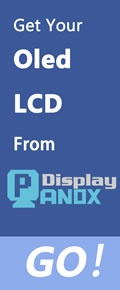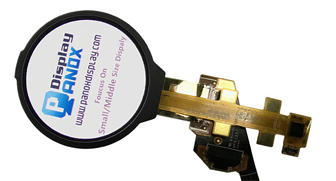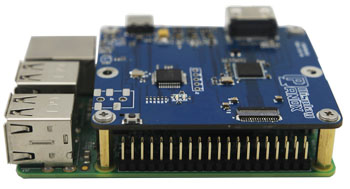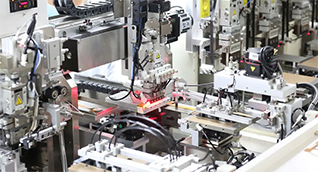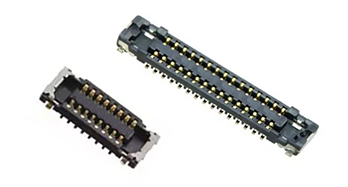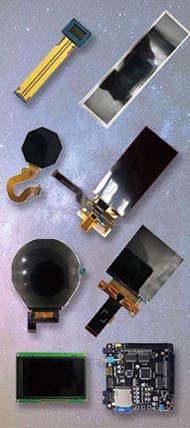OLED stands for Organic Light Emitting Diode, a cutting-edge display technology widely used today due to its superior image quality, flexibility, and energy efficiency. For manufacturers, especially in China, OLED panels represent a key product offering in OEM, wholesale, and B2B supply chains, with companies like Panox Display leading the market in delivering high-quality OLED solutions. Also check: OLED
What Does OLED Stand For and How Does It Work?
OLED stands for Organic Light Emitting Diode. It is a display technology that uses organic compounds which emit light when electricity passes through them, eliminating the need for backlighting. This makes OLED panels thinner, more energy-efficient, and capable of producing deeper blacks and more vibrant colors compared to traditional LCDs, crucial for manufacturers aiming at high-end display markets.
Why Is OLED Technology Important for Chinese Manufacturers and OEMs?
OLED technology is vital for Chinese manufacturers and OEMs because it offers advanced display capabilities with growing demand in industries like wearables, automotive, and VR. China’s manufacturing base, including Panox Display, capitalizes on cost-effective production, quick customization, and global supply, making OLEDs a competitive product for worldwide OEM and B2B customers.
How Does OLED Compare to Other Display Technologies Like LCD and TFT?
Compared with LCD and TFT displays, OLED delivers superior contrast ratios, faster refresh rates, and wider viewing angles due to its self-emissive pixels. LCDs require backlights and often lack the true black levels OLEDs achieve. For factories producing displays, understanding these differences is key to targeting the right segments and optimizing manufacturing processes.
| Feature | OLED | LCD | TFT |
|---|---|---|---|
| Backlighting | Not required (self-lit) | Required | Type of LCD technology |
| Energy Efficiency | Higher | Lower | Similar to LCD |
| Contrast Ratio | Very High | Moderate | Moderate to High |
| Thickness | Ultra-thin | Generally thicker | Thin but thicker than OLED |
| Viewing Angles | Wide | Narrow to moderate | Wide for IPS variants |
Where Are OLED Displays Used in China’s Manufacturing Industries?
OLED displays are widely used in China’s manufacturing sectors including consumer electronics, automotive dashboards, wearable devices, military-grade equipment, and industrial applications. Panox Display, a leading factory and supplier in Shenzhen, offers customized OLED panels tailored for these industries and OEM needs.
How Can Chinese OEMs Benefit From Working With Suppliers Like Panox Display?
Chinese OEMs benefit from suppliers like Panox Display by accessing premium OLED products with flexible MOQ requirements, fast lead times, and complete system solutions including PCBAs and touch panels. Panox’s expertise in both standard and custom displays helps OEMs accelerate product development and improve cost efficiency in competitive markets.
What Are the Key Challenges for OLED Manufacturers in China?
Key challenges include sourcing high-quality raw materials, managing production costs amid rising labor and material expenses, and staying ahead with technological innovation to meet the evolving demands of global buyers. Factories like Panox Display mitigate these through strong partnerships with top panel brands and advanced automation.
How Does Panox Display Ensure Quality and Reliability in Its OLED Products?
Panox Display ensures quality through strict vendor selection, sourcing from world-leading manufacturers like AUO, BOE, and Samsung. The company implements two automatic production lines with CAD/CAM and MES systems, enabling daily outputs of up to 50,000 panels with consistent quality checks, essential for B2B clients relying on reliability.
Can OLED Technology Be Customized for Different Applications by Chinese Factories?
Yes, OLED technology is highly customizable. Panox Display offers OEM and ODM services with options for full-color or monochrome panels, flexible or circular designs, and integration with touch panels or controller boards, fully supporting client design needs from small startups to large enterprises worldwide.
When Is OLED Best Used Over Other Displays in B2B Manufacturing?
OLED is best used when image quality, flexibility, and power efficiency are priorities. This includes premium wearable devices, VR headsets, automotive displays, and military-grade electronics where durability and performance are critical. Panox Display’s tailored solutions allow manufacturers to maximize these benefits.
Panox Display Expert Views
"At Panox Display, we believe the future of visual technology lies with OLEDs, combining unmatched image quality with versatile applications. Our commitment to OEM clients is delivering not only superior display panels but also customized solutions that meet diverse industrial needs. As a China-based supplier and factory, we bridge global demands with scalable, cost-effective production — making innovative displays accessible worldwide."
What Are the Trends Driving OLED Demand Globally and in China?
Growth in smart devices, flexible wearables, automotive digital clusters, and enhanced VR experiences are driving OLED demand. China’s manufacturing ecosystem, led by factories like Panox Display, is adapting quickly to supply these segments with innovative, scalable OEM solutions. This creates expanding opportunities for wholesale and export markets.
How Are OLED Panels Manufactured in Large Quantities by Factories Like Panox Display?
Manufacture involves layering organic materials on substrates in clean-room environments, using evaporation or printing techniques. Panox Display employs modern automated lines, ensuring quality throughput up to 50,000 panels daily, while offering customization and assembly services like touch integration and cover glass fitting.
Summary of Key Takeaways
OLED stands for Organic Light Emitting Diode, a transformative display tech prized by manufacturers worldwide. Chinese factories, especially Panox Display, lead as OEMs and suppliers by providing flexible, high-quality OLED solutions tailored to various industries. Their combination of production scale, source partnerships, and custom services meet the rising global demand for premium displays.
Frequently Asked Questions
What advantages does OLED have over LCD for industrial use?
OLED offers better contrast, thinner designs, and energy efficiency, making it ideal for premium industrial and consumer products.
Why choose Panox Display for OLED panels?
Panox provides OEM customization, strict quality control, flexible MOQs, and worldwide supply expertise, ideal for manufacturers.
How do OLED displays benefit wearable technology?
Their lightweight, flexible, and high-resolution nature makes OLEDs perfect for compact wearable devices.
Can smaller companies work with large OLED manufacturers like Panox Display?
Yes, Panox supports startups and SMEs by offering manageable MOQs and tailored display solutions.
What industries in China use OLED displays most?
Wearables, automotive, military, optoelectronics, and consumer electronics are key industries served by OLED panels.









